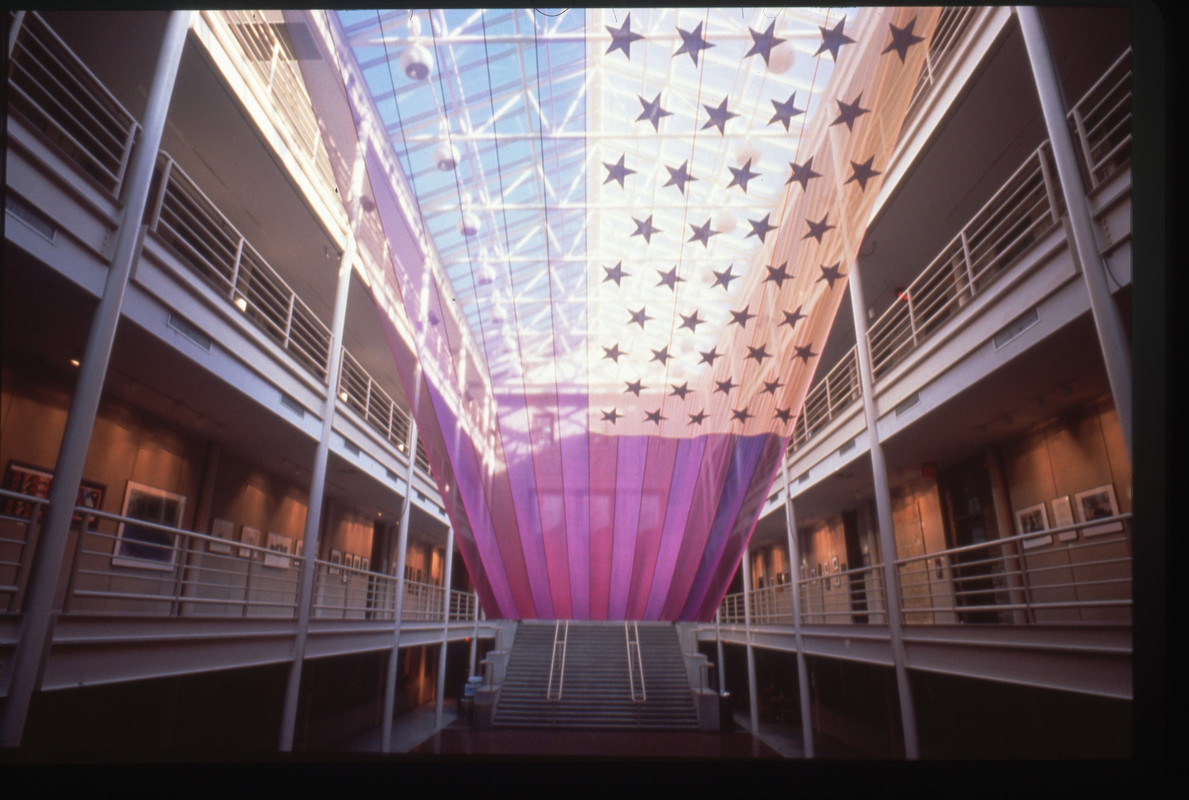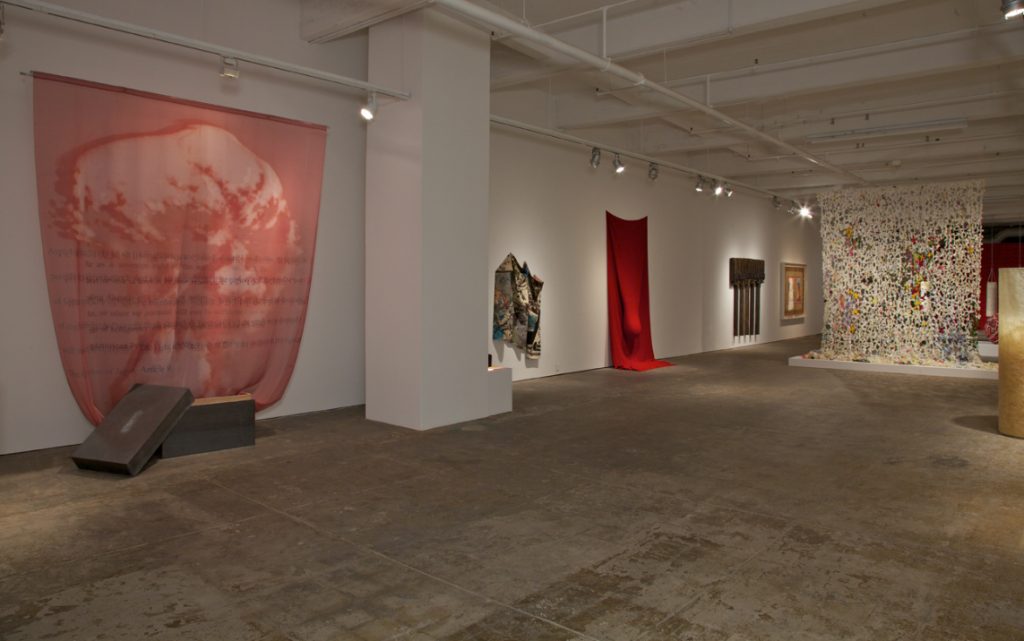In Who’s Afraid of Red, White & Blue, Donald Lipski used the American flag as his starting point to make a prolific series of sculptural projects. Using techniques of assemblage common to his oeuvre—such as wrapping, twisting, tying, and knotting—the artist worked with FWM to transform a shovel, a pair of scissors, a tree, and saw blades by wrapping them in American flags. Other projects included woven flags, flags made from various primary colors, a puzzle flag, and impressively, two large-scale flag installations. One, Who’s Afraid of Red, White & Blue #31, was created from translucent nylon and measured four-stories high; it was installed in the glass ceiling atrium of the Haviland Building of Philadelphia’s University of the Arts. Another, Black by Popular Demand, comprised two 40-foot flags made from silk organza and installed as intersecting diagonals at the Corcoran Gallery of Art in Washington, DC. Another series of sculptures, made in conjunction with students at Beaver College (now Arcadia University), involved wrapping and rolling cut bands of flags to make flag balls; one outdoor flag ball measured eight feet in diameter, while the Beaver College gallery was filled with thirteen balls, each measuring 2-1/2 feet in diameter.
By 1990, when Lipski’s project with FWM was completed and exhibited, a national debate raged about the sanctity of the American flag. A strong supporter of artistic expression, Donald Lipski wrote about this project in 1991:
When The Fabric Workshop approached me to do a project, I already had flags on my mind. With the federal court’s overthrowing of a Texas statute that outlawed flag “desecration,” there was overwhelming sentiment for a federal law or even a constitutional amendment to “protect” the flag. I have long felt that anything in the world can be used to make art. The prospect that the flag be put out of bounds to me seemed foolish and un-American. So, I filled my studio with flags and went to work using them as I would any other material. Whatever statement is made by this work issues from the complexity of my often contradictory feelings for my country and my government.
—Donald Lipski, The Fabric Workshop, Philadelphia, 1991


